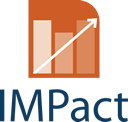The Netherlands – Services at home
| Criteria | Description | |
| Description of the measure | Measure | Service at home (Regeling Dienstverlening aan huis) |
| Country | The Netherlands | |
| Managing Authority | Ministry of Social affairs and employment | |
| Legal Basis | Article IV and XVI-XX, Belastingplan 2007 | |
| Launched in year | 2007 | |
| Main objectives | The main objective was to simplify regulation for household workers and especially families in need of personal services. | |
| Nature and type of public intervention | Exemption for employer contributions for workers employed for less than 4 days per week. | |
| Type of service providers and the competition between them | Individuals working for families. | |
| The price level and price setting mechanism | Price setting is free. Panteia (2014) estimates the average rate per hour on €9.6 according to a survey. Price varies according to activities from €5.9 for childcare to €10.5 for cleaning and maintenance. | |
| Type of employment relations | Direct employment relation | |
| The administrative framework and the role of the public authority | No specific administrative framework, except for the exemption for employer contributions. | |
| Type of services | All tasks for the households, including outside the home. Gardening, small maintenance, cleaning, childcare and care are included. | |
| Target groups (users and workers) | No specific target groups defined | |
| Effects | Employment | Panteia (2014) estimates that 272 million hours were conducted by workers at the home of which 95% falls under the category of the Law Service at home. |
| Creation and/or fostering of PHS activities | The total market (calculated by user payments) is estimated on €2.5 billion a year. The estimation of the different activities is:
|
|
| Improving access to elderly care/long term care/care for people with disabilities | 17% of users is older than 65 | |
| Gender equality and better conciliation of work-life balance | Panteia (2014) estimates about 1 million households or 13% of households in the Netherlands are using PHS. According to a survey, some characteristics can be determined:
|
|
| Better working conditions | No data available. Workers obtain limited employment rights (paid leave and sick leave). But according to a survey of Panteia (2014):
Combined around 76% of all users do not comply for any of their employer duties. |
|
| Budgetary effects | Public costs | There is no direct State intervention. The State does lose potential income by allowing household not to pay employer contributions for their domestic workers. However, they would not obtain this through undeclared labour either. |
| Earn back effects | ||
| Net cost |





